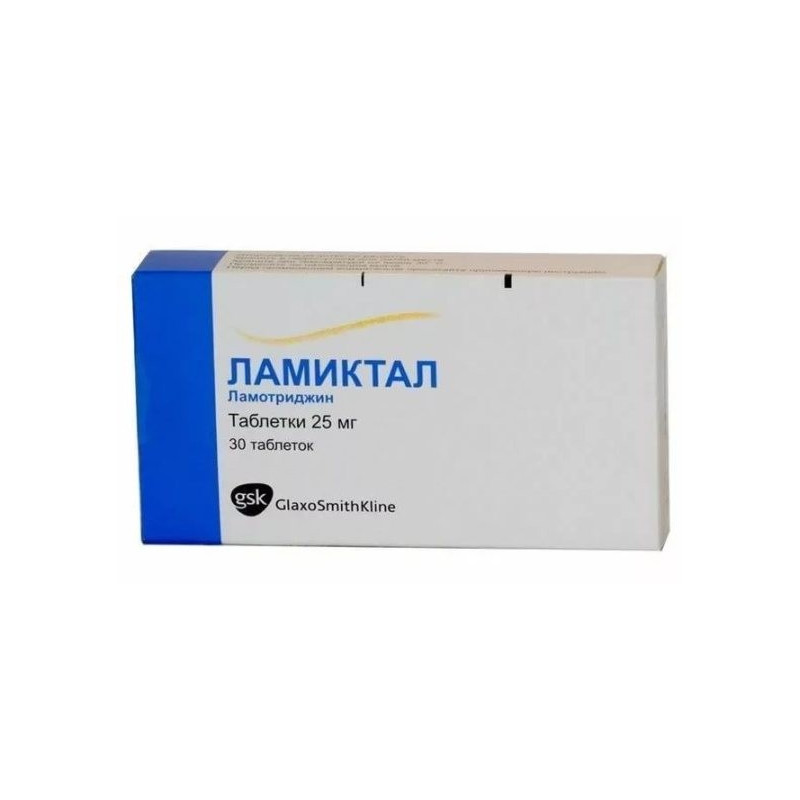



 All payments are encrypted via SSL
All payments are encrypted via SSL
 Full Refund if you haven't received your order
Full Refund if you haven't received your order
/Lamictal
Lamictal - tablets: 1 table. contains lamotrigine 25, 50 and 100 mg, excipients: lactose monohydrate; MCC; sodium starch glycolate type A; Povidone; Magnesium stearate; iron oxide yellow E172; in packing of 30 pieces;
Lamictal - soluble / chewable tablets: 1 tab. contains lamotrigine 5, 25 and 100 mg, excipients: Calcium carbonate; low substituted hydroxypropylcellulose; aluminum magnesium silicate; sodium starch glycolate type A; Povidone K30; saccharin sodium; blackcurrant flavoring 500.009 / AP 0551; magnesium stearate; in the package 30 pcs.
butcologic action
Lamictal has an anticonvulsant effect. Blocks potential-dependent sodium channels, stabilizes neuronal membranes and inhibits the release of glutamic acid, which plays a key role in the occurrence of epileptic seizures.
Partial and generalized seizures, including tonic-clonic and associated with Lennox-Gastaut syndrome (in adults and children), bipolar disorders in adults over 18 years of age with predominantly depressive phases.
Hypersensitivity.
Precautions should be prescribed for renal failure.
Since lamotrigine is a weak inhibitor of dihydrofolate reductase,
there is at least a theoretical risk of developing birth defects in the fetus when taking the drug during pregnancy.
In order to assess the safety of Lamictal during pregnancy, there is insufficient data. Currently, information on the use of Lamictal in lactation is incomplete. Lamotrigine is determined in breast milk at concentrations of 40-60% of its concentration in plasma. Some breastfed babies have a therapeutic plasma concentration of lamotrigine.
For the gradation of side effects, the WHO classification was used:
often (> 1 case per 100 appointments), sometimes (
